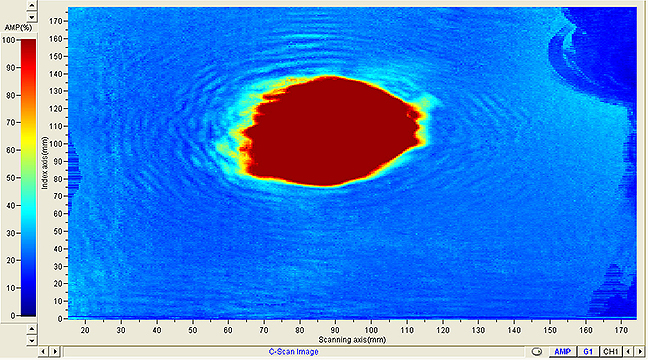Ultrasound Spots Defects in Animal Hides
An Agricultural Research Service (ARS) scientist has found a way to spot defects in the animal hides that become footwear, sporting goods, fashion accessories, and other leather goods.
This is an important achievement. About 90 percent of the 32 million hides produced by the meat industry in the United States each year are exported. Before they are sold in international markets, they are visually inspected, weighed, and given a numeric grade. Many hides, however, have hidden defects caused by insect bites, abrasions, scars, and natural rough spots. Such defects can sometimes make it hard to tell the difference between a high-quality hide and a lesser one.
Processing and selling animal hides is a $2 billion industry in the United States, and the lack of any technology for measuring defects and characterizing quality often leads to disputes after the hides are sold, says Stephen Sothmann, president of the U.S. Hide, Skin and Leather Association (USHSLA).
Having technology that meets these needs would give U.S. exporters an advantage over foreign competitors and bring higher prices for U.S. hides. American hides are widely considered to be a premium product in global markets, but foreign competition is intensifying, and "it's important that we remain on the cutting edge in terms of quality," Sothmann says.
"We need to be able to take the guesswork out of evaluating unfinished hides, so that we can accurately and objectively predict the quality of the leather product that can be made from them," he adds.
Cheng-Kung Liu, an ARS materials engineer based in Wyndmoor, Pennsylvania, may have found a solution: ultrasonic waves.
|
|
Ultrasonic waves are sound waves. When they are transmitted through an object, any defects or rough spots on the object's surface will change the intensity of the signal. You can detect and measure those surface defects—which may be invisible to the naked eye—by measuring the changes in that signal. Ultrasonic waves are used to grade lumber and identify defects on aircraft parts and other precision materials, Liu says.
Liu, who began working on the problem at the request of the USHSLA, has adapted existing scanning technology so that it can detect defects in animal hides. In recent tests, he scanned hides by sending low-frequency airborne ultrasonic signals through the hides to a receiver a few centimeters away.
His scans collected enough data to accurately assess defects-and predict the potential quality of the leather's toughness, strength, stiffness, and other factors. The scans didn't cause any damage to the hides.
Results were published March 2017 in the Journal of American Leather Chemists Association.
The scans took about 20 minutes, but Liu has since purchased upgraded equipment that cuts that time in half. Because the equipment is based on commercially available technologies, he anticipates having a scanner available for industrial use in 2 to 3 years. — By Dennis O'Brien, ARS Office of Communications.
Key Facts
- Processing and selling animal hides is a $2 billion U.S. industry.
- Defects in the hides can lower their quality and price.
- ARS found that ultrasound reveals hidden defects and predicts leather quality.
- The ultrasound method gives U.S. exporters an advantage over competitors.
Full Story








